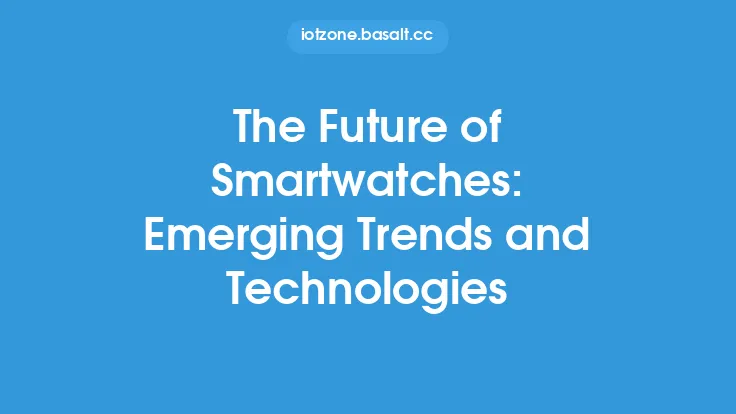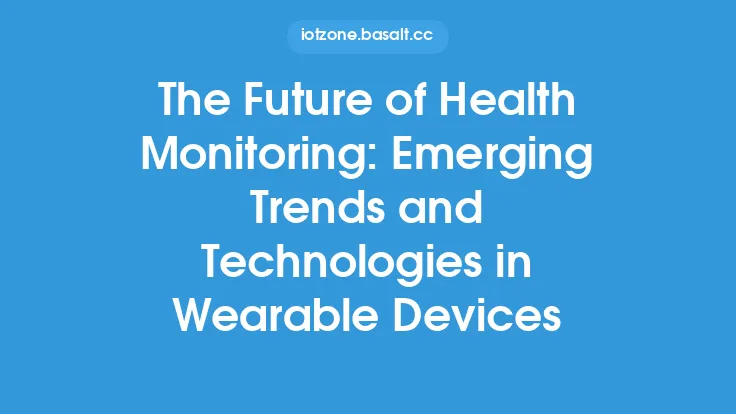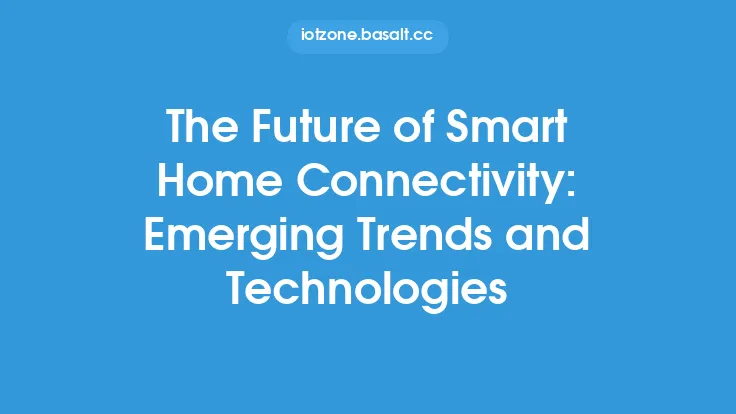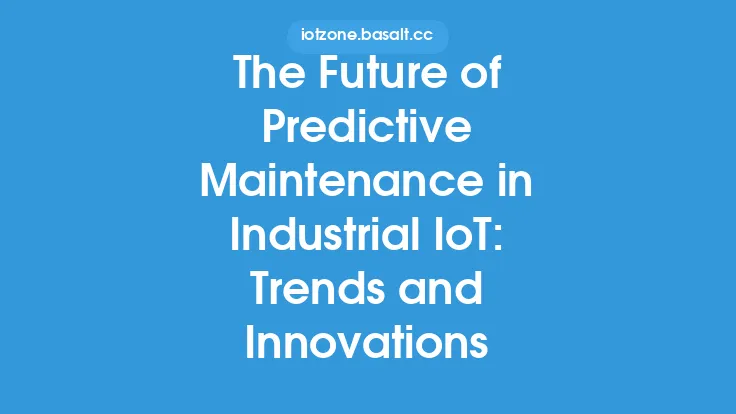The industrial Internet of Things (IIoT) has revolutionized the way manufacturing and production processes are carried out, enabling real-time monitoring, automation, and data-driven decision-making. As IIoT continues to evolve, quality control has become a critical aspect of ensuring the reliability, efficiency, and safety of industrial operations. In this article, we will delve into the emerging trends and technologies that are shaping the future of quality control in IIoT.
Introduction to Quality Control in IIoT
Quality control in IIoT involves the use of advanced technologies such as sensors, machine learning, and data analytics to monitor and control the quality of products and processes in real-time. This enables manufacturers to identify and address quality issues promptly, reducing waste, improving yields, and enhancing overall productivity. The integration of quality control with IIoT has also enabled the development of predictive maintenance, where equipment and machinery can be maintained and repaired before they fail, reducing downtime and increasing overall efficiency.
Emerging Trends in Quality Control
Several emerging trends are transforming the landscape of quality control in IIoT. One of the key trends is the increasing use of artificial intelligence (AI) and machine learning (ML) algorithms to analyze data from sensors and other sources, enabling real-time quality control and predictive maintenance. Another trend is the growing adoption of cloud-based quality control systems, which enable manufacturers to access and analyze data from anywhere, at any time. The use of digital twins, which are virtual replicas of physical systems, is also becoming increasingly popular, enabling manufacturers to simulate and optimize quality control processes in a virtual environment.
Technologies Driving Quality Control in IIoT
Several technologies are driving the evolution of quality control in IIoT. One of the key technologies is the Internet of Things (IoT) itself, which enables the connection of devices and systems, and the collection and analysis of data from these devices. Other technologies driving quality control include machine vision, which enables the use of cameras and other sensors to inspect products and detect defects, and robotics, which enables the automation of quality control processes. The use of advanced data analytics tools, such as predictive analytics and prescriptive analytics, is also becoming increasingly popular, enabling manufacturers to analyze data and make informed decisions about quality control.
Role of Machine Learning in Quality Control
Machine learning is playing an increasingly important role in quality control, enabling manufacturers to analyze data from sensors and other sources, and identify patterns and trends that may indicate quality issues. Machine learning algorithms can be used to develop predictive models, which can forecast quality issues before they occur, enabling manufacturers to take proactive measures to prevent them. Machine learning can also be used to develop classification models, which can classify products as good or bad, based on their characteristics and features.
Impact of Digital Transformation on Quality Control
The digital transformation of manufacturing and production processes is having a significant impact on quality control. The use of digital technologies such as IoT, AI, and ML is enabling manufacturers to collect and analyze data from a wide range of sources, and use this data to make informed decisions about quality control. The digital transformation is also enabling the development of new business models, such as product-as-a-service, where manufacturers can offer products and services on a subscription basis, and use data and analytics to optimize quality control and maintenance.
Future of Quality Control in IIoT
The future of quality control in IIoT is exciting and rapidly evolving. As technologies such as AI, ML, and IoT continue to advance, we can expect to see even more sophisticated quality control systems, which can analyze data in real-time, and make informed decisions about quality control. The use of digital twins and other virtualization technologies will also become increasingly popular, enabling manufacturers to simulate and optimize quality control processes in a virtual environment. The integration of quality control with other functions, such as maintenance and supply chain management, will also become more prevalent, enabling manufacturers to optimize overall efficiency and productivity.
Challenges and Limitations
Despite the many benefits of quality control in IIoT, there are also several challenges and limitations that need to be addressed. One of the key challenges is the lack of standardization, which can make it difficult to integrate different systems and devices. Another challenge is the need for skilled personnel, who can develop and implement quality control systems, and analyze data from these systems. The security of quality control systems is also a major concern, as these systems can be vulnerable to cyber attacks and other security threats.
Conclusion
In conclusion, the future of quality control in IIoT is rapidly evolving, driven by emerging trends and technologies such as AI, ML, and IoT. The use of these technologies is enabling manufacturers to collect and analyze data from a wide range of sources, and use this data to make informed decisions about quality control. As the digital transformation of manufacturing and production processes continues, we can expect to see even more sophisticated quality control systems, which can analyze data in real-time, and make informed decisions about quality control. However, there are also several challenges and limitations that need to be addressed, including the lack of standardization, the need for skilled personnel, and the security of quality control systems.




